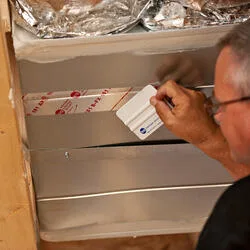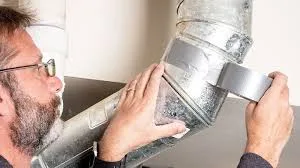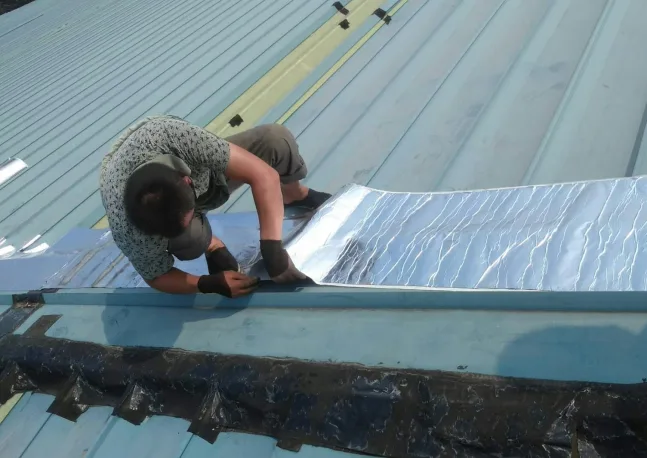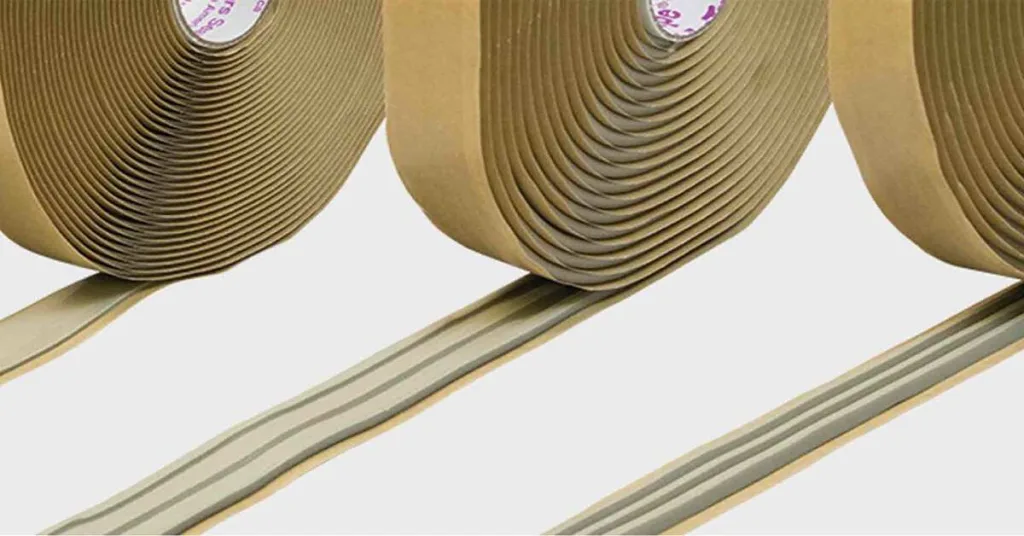Did you know that improper application of HVAC tape can cost businesses thousands of dollars in air leaks and inefficiencies every year? Mastering the art of applying HVAC tape not only saves money but also ensures the longevity of HVAC systems. In this guide, we dive deep into everything you need to know about using HVAC tape effectively, from working in tight spaces to identifying the best tools and methods. Let’s get started!
How Do I Apply HVAC Tape in Tight Spaces?
With no two HVAC installations being the same, adapting to different jobsite environments is critical. Tight spaces like attics and crawlspaces often present challenges for HVAC technicians, but applying HVAC tape properly in these areas is crucial to ensuring airtight seals.
One effective strategy for working in tight spaces is to use HVAC tape with a split liner. This innovative design allows you to peel off one half of the liner at a time. Start by applying one half of the tape to the seam or edge, ensuring proper alignment. Then, remove the other half of the liner and press the tape firmly into place. This method minimizes the risk of the tape folding over or sticking to itself, saving you time and reducing material waste.
If split-liner tape isn’t available, you can use another technique: remove just a few inches of the liner at a time as you apply the tape. This helps maintain control, especially in confined spaces, and ensures a smoother application. Always finish by wiping down the tape with a squeegee to guarantee maximum adhesion and durability.
Pro Tip: When working in crawlspaces, consider using gloves with good grip to handle the tape more effectively. A steady hand and the right tape make all the difference!
Tips for Applying HVAC Tape
Cut or Tear the Tape at the Proper Length
Measure your tape carefully before cutting. For short seams, cut the tape to length before applying. For longer seams, apply directly from the roll, peeling off the liner as you go. This ensures no unnecessary waste or overlapping, which could compromise the seal.
Remove the Liner with Precision
If your HVAC tape includes a liner, start by folding a corner to peel it back easily. Gradually remove the liner as you apply the tape to maintain control and prevent wrinkles or bubbles.
Use a Squeegee to Ensure Proper Adhesion
A squeegee is your best friend for applying pressure evenly across the tape. This step not only secures the tape but also creates a long-lasting bond. Don’t skip this vital step—it’s the difference between an airtight seal and a potential air leak.

What Tools Are Needed to Apply HVAC Tape?
Squeegee: This tool is indispensable for applying even pressure, especially with pressure-sensitive HVAC tapes. The result? A bond that lasts.
Utility Knife or Scissors: For clean cuts, a sharp tool is necessary. Clean edges help the tape align perfectly with seams.
Measuring Tape: Accurate measurements save time and prevent waste.
Gloves: For better grip and to protect your hands, especially when working in tight or rough areas.
What Is the Proper Way to Apply HVAC Tape?
Step 1: Cut or Tear the Tape
If sealing a short seam, pre-cut the tape to the required length. For longer seams, unroll the tape gradually to maintain control during application.
Step 2: Peel Back the Liner
Start peeling the liner from one end by folding down a corner. Gradually remove the liner as you apply the tape to avoid unnecessary sticking or folding.
Step 3: Align the Tape
Position the tape directly over the seam or edge, ensuring it remains centered. Smooth out any wrinkles as you go for a clean, professional look.
Step 4: Apply in Sections
For longer applications, apply the tape in manageable sections to avoid errors. Overlapping or leaving gaps can lead to wasted tape or air leaks.
Step 5: Use a Squeegee
Firmly press down on the tape with a squeegee to maximize surface contact and ensure a permanent bond. This step is crucial for achieving airtight results.
Step 6: Inspect Your Work
Once the tape is applied, double-check for any missed spots, wrinkles, or gaps. A thorough inspection guarantees that the job is done right the first time.

Related articles:
What tape to use in your HVAC system?
How to Identify Printed HVAC Tape
Printed HVAC tape is more than just a convenient labeling tool; it’s a critical component for ensuring compliance with industry standards. Many printed HVAC tapes include the manufacturer’s file number and UL code directly on the tape backing. This allows HVAC system inspectors to quickly verify that the tape meets required performance standards.
Using unprinted tape could indicate that non-compliant materials were used, which might compromise the system’s integrity. For example, a UL 181-rated tape ensures superior adhesion and sealing properties, meeting rigorous HVAC system standards.
Pro Tip: Always choose tape with clear, legible printing for ease of inspection and peace of mind.
Conclusion
Applying HVAC tape may seem straightforward, but the right techniques, tools, and knowledge can make a world of difference. Whether you’re working in tight spaces or ensuring compliance with printed tape, following best practices guarantees superior results every time.
At Fonitaniya™, we’ve been innovating adhesive solutions for over 15 years, providing high-performance HVAC tape that meets the toughest industry standards. When it comes to sealing and bonding, we’ve got you covered.
FAQs
How do I choose the best HVAC tape for my project?
Selecting the right HVAC tape depends on the surface, temperature, and job requirements. Look for UL-rated options for compliance.
Can HVAC tape be used on ducts with insulation?
Yes, but ensure the tape is rated for use on insulated ducts to avoid adhesion issues.
How long does HVAC tape last?
With proper application, most HVAC tapes last for several years, often matching the system’s lifespan.
Is HVAC tape resistant to high temperatures?
Most HVAC tapes are designed to withstand temperatures ranging from -20°F to 200°F. Always check the product’s specifications.
Can I apply HVAC tape to wet surfaces?
No, surfaces must be clean and dry for proper adhesion. Moisture compromises the tape’s effectiveness.
Why is my HVAC tape peeling off?
Improper application or lack of sufficient pressure during installation could cause the tape to peel. Use a squeegee to ensure proper adhesion.




